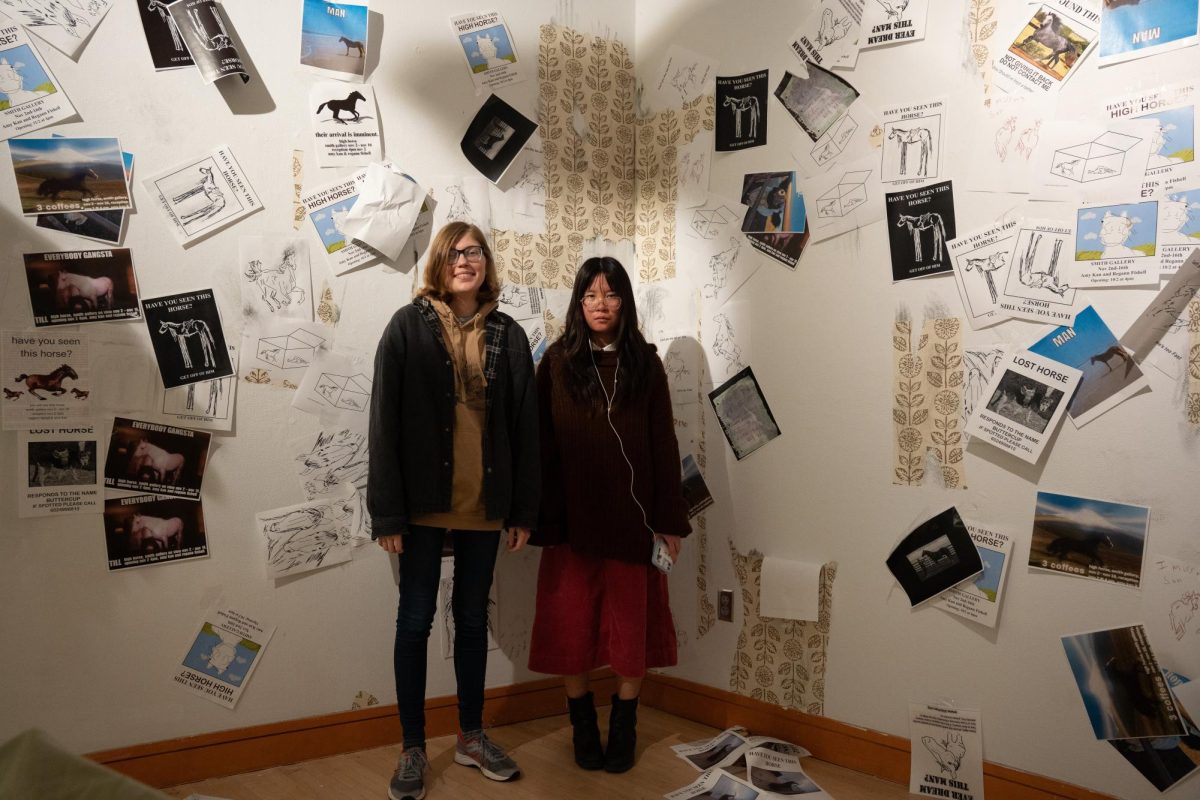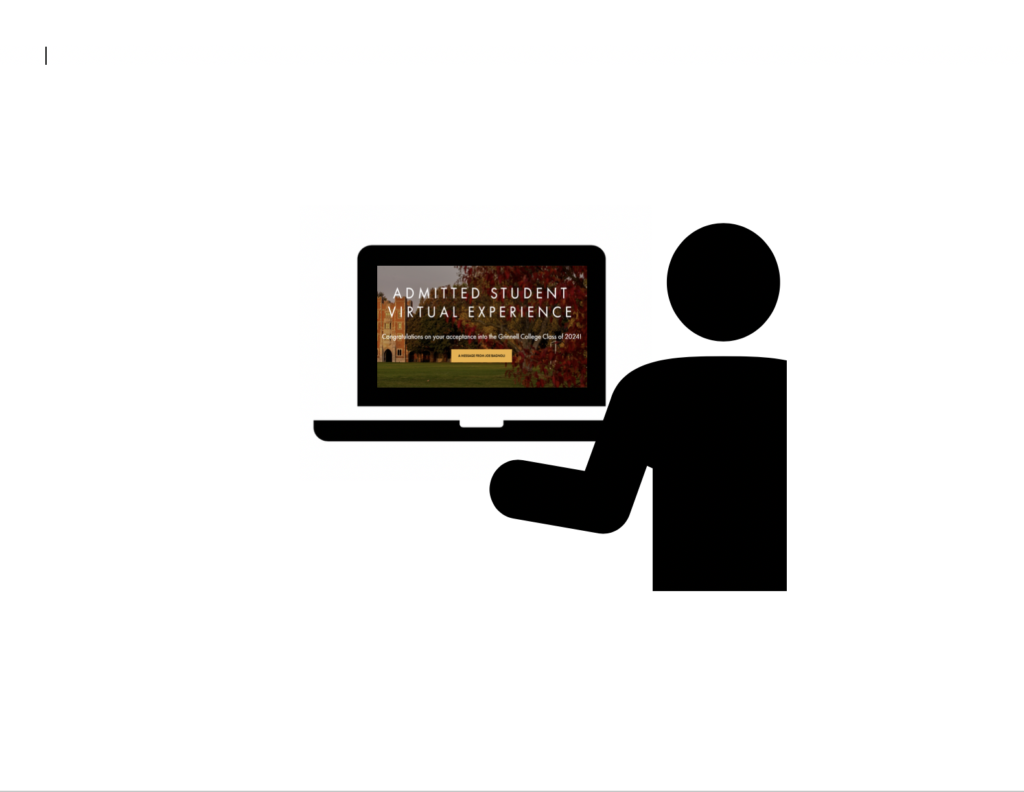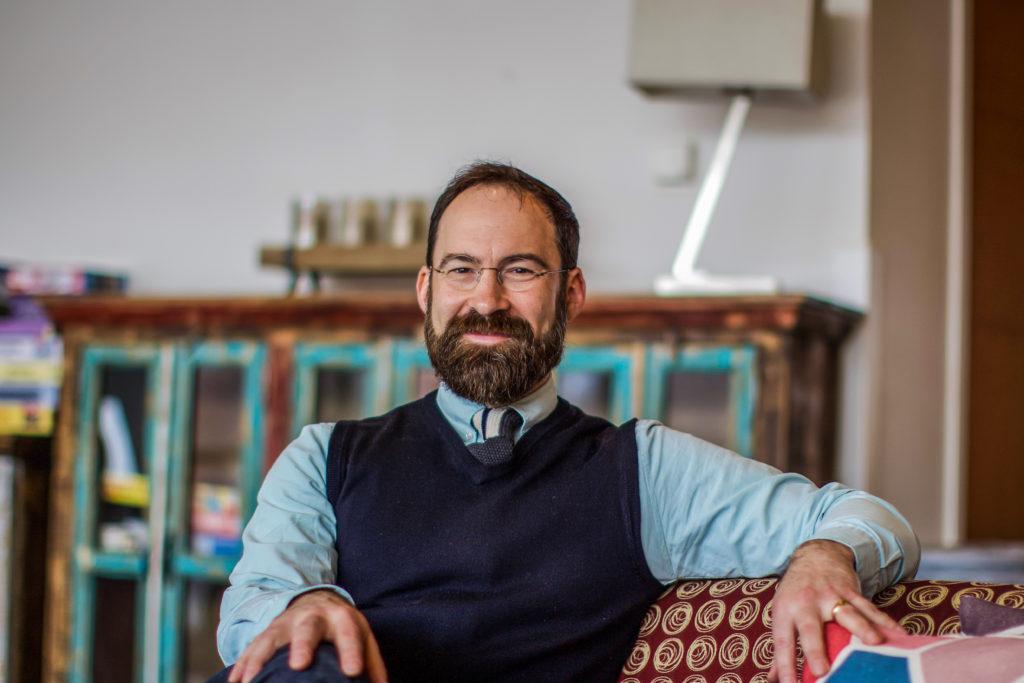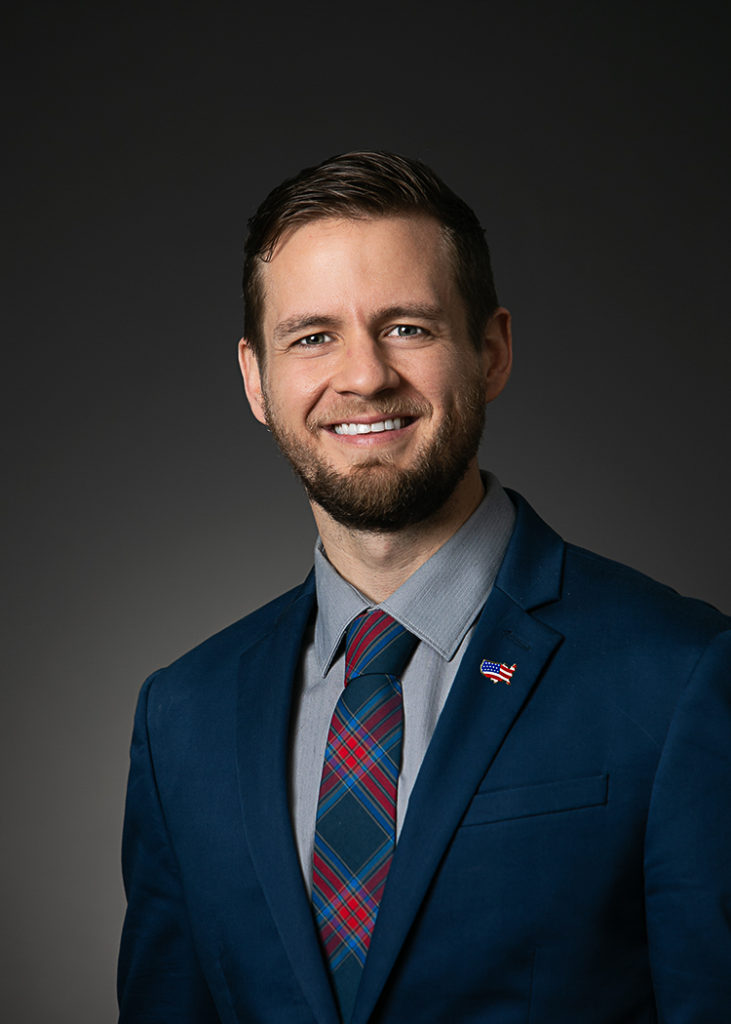Last February, professors John Rommereim, Music, Dean Bakopoulos, English and Lee Running, Art, put together an innovation fund proposal for a team-taught course for Spring 2013. The proposal was accepted and this course, separated into a MUS 325 Composition Seminar: Vocal Composition, ENG 385 Writing Seminar: Fiction and ART 320 Advanced Studio: Site Specific, with 12 students in each, will bring musicians, fiction writers and visual artists together to collaborate to combine the three mediums into complete works. The course will include three main projects and many smaller exercises, with each project giving primacy to one of the art forms, led by the respective professor. The class will meet together often, but will also meet in separate seminars at times.
The professors spent time over the summer designing the syllabus, and in order to do so, they decided they needed personal experience working with the types of collaborative projects and smaller assignment prompts they would be giving to the students in the spring. Experimenting with collaboration and these types of prompts generated a lot of interesting text, music and imagery, and the professors all felt they created work through efforts very different from their typical creative processes.
“I wouldn’t think of trying to write ‘Iowan Noir,’ as Dean came up with the idea. You bounce off that possibility and it takes you to places you wouldn’t have gone,” Rommereim said. “The other person’s sensibilities help you start at a different place and then get somewhere. … You’re able to really innovate and do some new things, or at least start some new threads.”
Through these experiments, the biggest success was their completed piece, “A Field Guide to Summer,” performed last Saturday at the Grinnell Singers and Oratorio Society concert. This work began with a writing assignment from which Bakopoulos came up with four poems surrounding the theme of nostalgia. Rommereim then made short piano pieces that reflected these poems, and Lee took the text and music and interpreted them in video.
“One of the things I think we learned is that one natural path to pursue in these collaborations is sequential, passing the baton to one another, rather than crafting something completely at once with equal leadership constantly,” Rommereim said.
The video created by Running included haunting, poignant, yet docile images. What stood out most strongly, in an almost overwhelmingly emotional way, was a shot of a dead butterfly torn in half, with two hands manipulating the halves. The halves are arranged in different ways, bringing in a third half and then fourth. Finally, all the pieces are arranged to create two butterflies laying on top of one another. In the end, you cannot tell that the halves do not match up; the butterflies look whole again. Seeing something so beautiful and fragile torn and manipulated in such a way felt irreverent and, at points, almost violent, despite the gentleness of the hands.
Running later explained that one of the butterflies flew into her car windshield over the summer and she had taken it, put it into a box and kept track of it because the body fascinated her.
“I was thinking about repair. It was broken, but I was thinking about what it would be for a set of hands to repair something like that. It’s dead, it’s not going to be reanimated, but there was something interesting about the idea of re-assembling something, even in a flawed way, that is so symmetrical and beautiful; but also it is so difficult because the pieces are so small and fragile,” Running said.
Along with feelings of nostalgia, the text by Bakopoulos included ideas of insomnia, which lent itself to dream imagery.
“The narrative we were working with for the piece was really evocative. I was working inside these dream images—that state between things, between waking and sleeping. Dream fragments are like that [irreparable butterfly],” Running said. “You can’t hang onto them, you can’t reconstruct the space, but they’re these floating pieces you’re trying to hang on to.”
The only acoustic instrument involved in the piece was a piano, but Rommereim used music technology to do more with the sound the piano could make. Creating all the loops and changes live, with his laptop up on the music stand of the piano, Rommereim used the computer program, Max, to take sections of the piano line, then play them backward at three-quarters of the speed, which translates the pitches to a lower key, while also playing the original version on the piano over the loop.
“I wanted to do something that broke out of exclusively piano music, and I tried to at least step out of normal piano playing by using muted sounds and playing on the string to get the different overtones. With the idea of nostalgia, looking back, there’s an obvious reference that can be made with electronic music, in that it’s easy to create backwards sounds. The idea of looking back in time, I played with that a little bit,” he said.
Bakopoulos felt that the creation of “A Field Guide to Summer” and its performance generated many exciting ideas for future work.
“It’s very satisfying to see how one artistic impulse has a ripple effect on other artists, and then to see, once they’ve had a chance to wrestle with and respond to your own vision, how much your vision changes. I actually was very anxious about the whole performance—before, during and after—simply because I could already see where I wanted to go next, how I wanted to push things to a new level the next time,” he wrote in an email to the S&B. “I understood what I was trying to say in a way I never would have without working alongside two talented artists from different disciplines.”
The professors all really enjoyed the collaborative experience over the summer and plan to do more collaborative work in the future. They hope to perform “A Field Guide to Summer” again at some point in time.
Running believes students will find, when collaborating, that they create work very different from their usual style.
“I think students make riskier work when they’re collaborating than when they’re working on their own and the core of being involved in a creative life is putting yourself in a position of risk, where it is unfamiliar and you’re treading in territory that feels brand new. There’s always new discovery that happens at the periphery of every process,” Running said.
Another very exciting aspect of the team-taught course is the invitation of guest artists that will be brought to campus, including the a cappella group, Roomful of Teeth. On their website, they describe themselves as “a vocal project dedicated to mining the expressive potential of the human voice.” The ensemble uses extended technique—things that can be done with the voice other than sing such as yodeling and overtone, or throat singing.
The ensemble has eight members, including Caroline Shaw, who won this year’s Pulitzer Prize for Music for her original a cappella composition “Partita for 8 Voices.” Shaw, age 30, is the youngest recipient of the music Pulitzer Prize in history, and this is the first time the prize was awarded to a composition for unaccompanied voices.
Roomful of Teeth will be devoting their entire performance at Grinnell to student-generated work. The class will spend time in February Skyping with the ensemble to get to know the singers and their capabilities, in order to write pieces that will work well for the group. The ensemble will then learn the music for the student pieces, which will also include student-written text and accompanying imagery, and in April, the ensemble will come to campus to perform all the students’ works. The three professors also plan to create a work that the ensemble will premiere.
Bakopoulos believes students will develop many important skills from these collaborative creative projects.
“So often, fine arts classes focus on product, but it’s in the process where students gain those things so essential to a career in the arts: a willingness to listen to other ideas, to merge diverse aesthetic visions, to use form and technology and innovative ways,” he said. “We’re looking at this as a course in creativity and problem solving and collaboration.”
This ability to collaborate and bridge mediums that students will develop during the course will prove very valuable should they choose to pursue an artistic career.
“Increasingly, after graduation, the current needs of the marketplace are such that artists are required to have team-based work and to be able to work across media: visual, aural and textual. It makes sense for us to design courses that bridge across those divides,” Rommereim said. “I think it can be a very promising thing to be intentional and explicit in building bridges across the arts. We have the opportunity at a liberal arts college to offer that fertile, cross-disciplinary, team-based work.”
























































